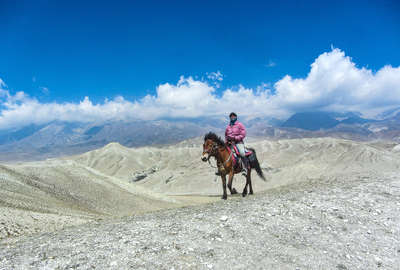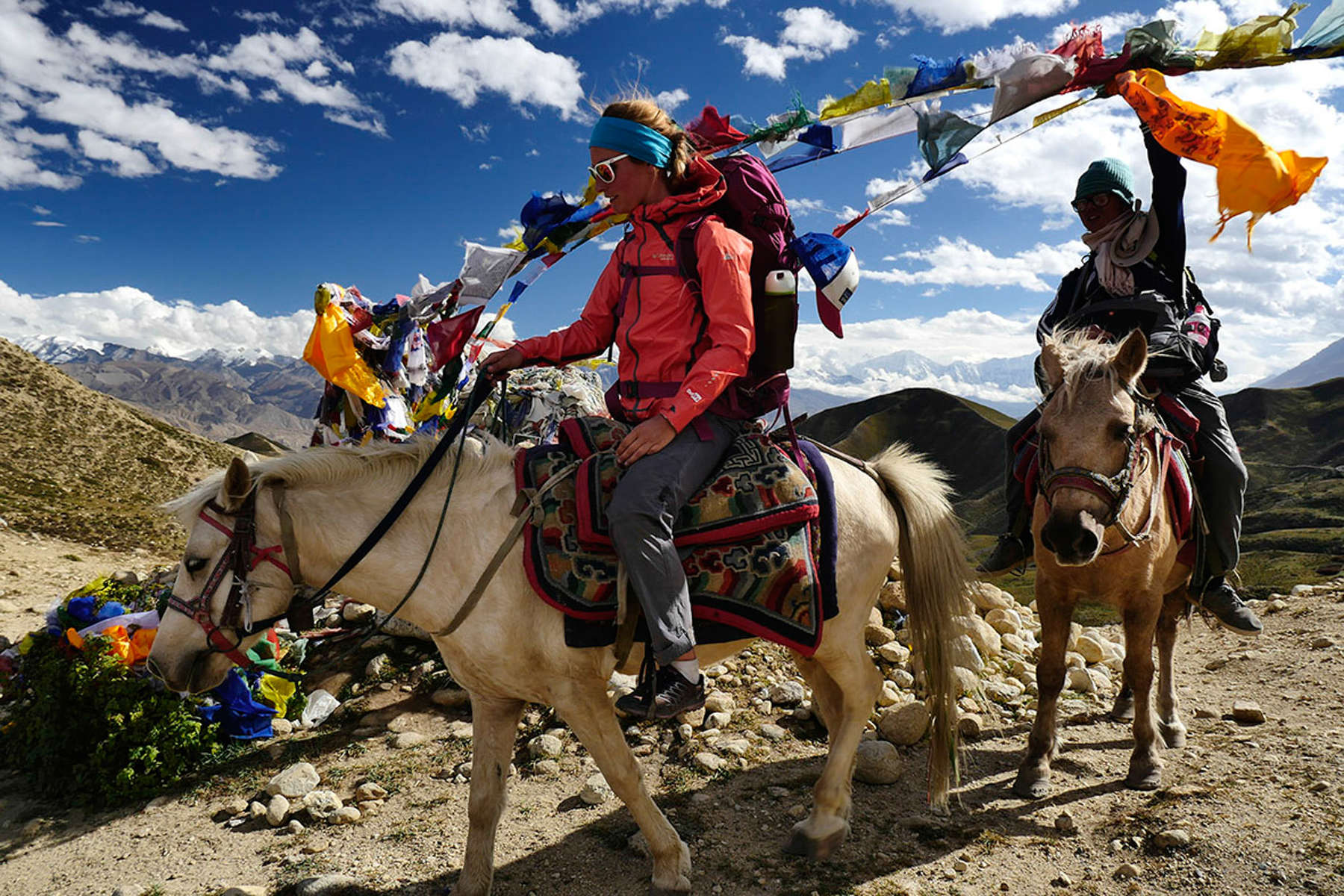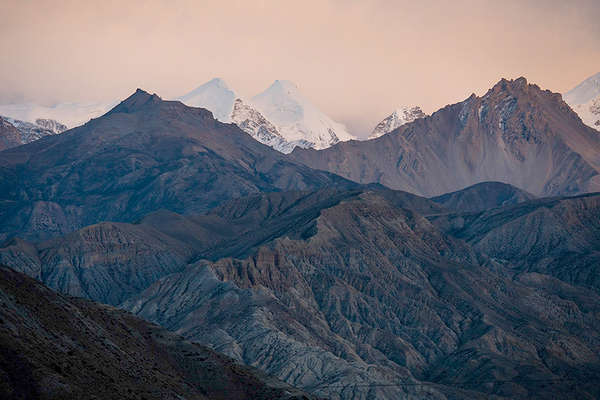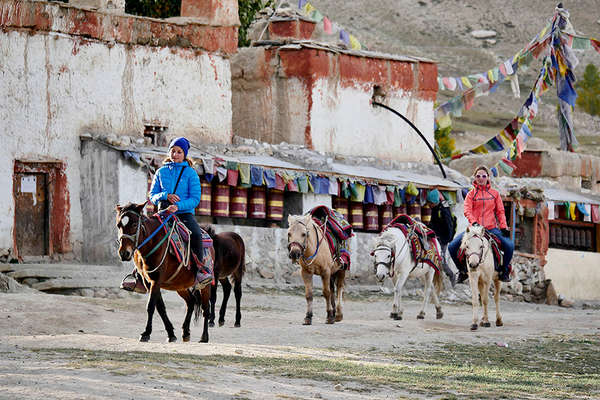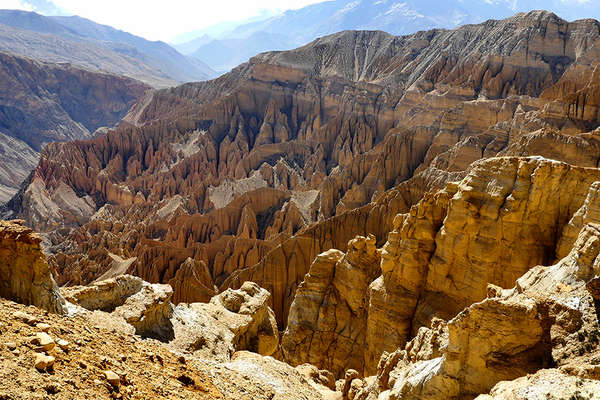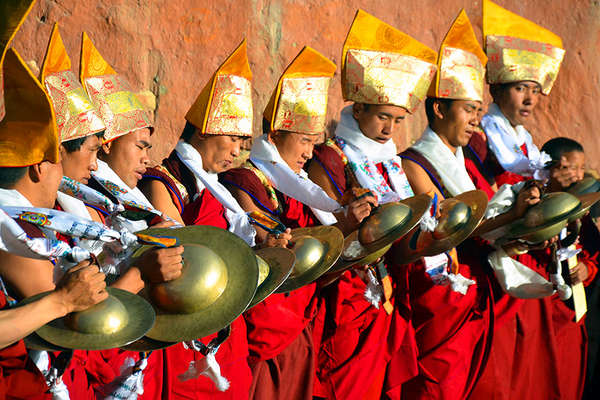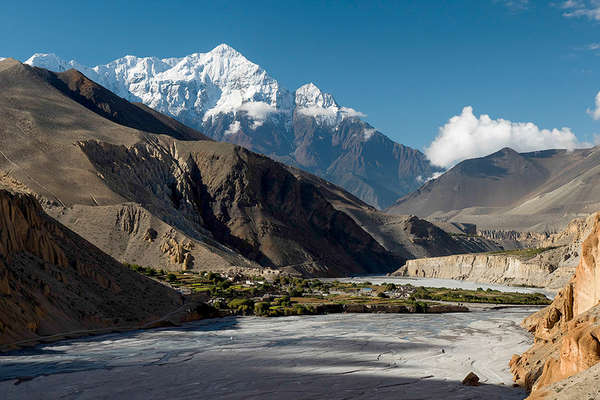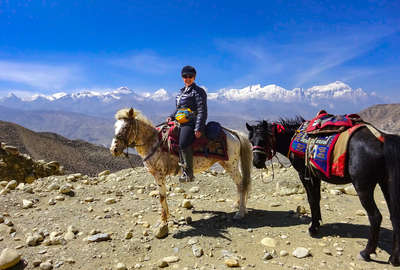Please refer to your home country's Foreign Office website for up-to-date information. This section predominantly refers to UK citizens, and advice can vary depending on your nationality. Although we endeavour to keep this section updated, requirements can change quickly, and your home country's Foreign Office website takes precedence.
Visas
British nationals require a visa to visit Nepal for up to 90 days. To apply for a visa in the United Kingdom, you should contact the Embassy of Nepal, 12A, Kensington Palace Gardens, London, W8 4QU (telephone: +20 7229 1594 or 6231 or 5352).
Visas are available on arrival at Tribhuvan International Airport and at some land borders. To obtain a visa upon arrival by air in Nepal you must fill in an application form on arrival and provide a passport photograph. A single-entry visa valid for 15, 30 or 90 days costs US$25, 40 or 100. At Kathmandu’s Tribhuvan Airport the fee is payable in any major currency (some land crossings insist on payment in US dollars), Children under 10 require a visa but are not charged a visa fee. A Nepali visa is valid for entry for three to six months from the date of issue.
Passport validity
Your passport should have an expiry date at least 6 months after your date of entry into Nepal.
Addresses of consulates
Ambassade du Népal
45, bis rue des Acacias
75017 PARIS
Tél. : 01 46 22 48 67
Fax : 01 42 27 08 65
nepalinparis@noos.fr
Ambassade du Nepal
Rue de la Servette 81
1202 Genève
Tél. : 022/733 26 00
Fax : 022/733 27 22
mission.nepal@bluewin.ch
Ambassade du Nepal
Avenue brugmann 210
1050 Bruxelles
Tél. : +32 (0) 2 346 26 58
Fax : +32 (0) 2 344 13 61
nepal@pandora.be
Ambassade à l'étranger
Lazimpat BP 452
Katmandou
Tél. : +977 (1) 4 412 332
Fax : +977 (1) 4 418 288
It’s important to take out appropriate travel insurance for your needs. A GHIC or EHIC is not an alternative to travel insurance as it does not cover all health-related costs, for example, medical repatriation, ongoing medical treatment and non-urgent treatment.
Travellers should ideally arrange an appointment with their GP around five weeks before travelling. This appointment provides an opportunity to assess health risks taking into account a number of factors including destination, medical history, and planned activities. For those with pre-existing health problems, an earlier appointment is recommended.
Vaccinations
Please
click here for more information on vaccine recommendations when travelling to Nepal.
General advice
Medical treatment is expensive at western travellers’ clinics in Nepal. Healthcare is poor in most places outside the Kathmandu Valley and Pokhara. It may be difficult to get rapid helicopter evacuation if you fall ill or suffer a serious accident in a remote area of the country. Make sure you have adequate travel health insurance and accessible funds to cover the cost of any medical treatment abroad, repatriation and evacuation by helicopter (presently costing between £1,000 and £2,000 per flying hour).
Acute Mountain Sickness (AMS) or Altitude Sickness
Acute Mountain Sickness (AMS) or Altitude Sickness is a
common problem in the Himalayas and can affect travellers regardless of age or gender
or physical condition. It is caused by a lower level of absorbed oxygen
compared to that at sea level. Even if you are in good shape, you may be
affected by AMS. (Previous high altitude experiences, very good training or
excellent physical fitness do not prevent altitude-related illness).
Initial symptoms may include:
- Loss of appetite
- Tiredness
- Headache
- Nausea
- Dizziness
- Palpitations
- Poor sleep
- Respiratory difficulties
If symptoms get worse, you can become confused,
irrational and mentally unbalanced.
The best way to fight these symptoms is prevention:
- Do not overestimate yourself.
- Avoid unnecessary vigorous activity and allow
your body time to acclimatise.
- Stay hydrated and eat well (you can try to eat a
diet rich in carbohydrates).
- Do not neglect the signals your body sends you.
If you have symptoms:
- Tell your guide/the local team
and those you’re travelling with straight away
- Get plenty of rest at the same
altitude until you feel better – do not travel to a higher altitude
- Take medication as prescribed by your doctor.
- If your condition does not improve, then you
should consider going down as soon as possible.
It is important to pay attention to hygiene and follow the
advice of your guide. Our partners in Nepal recommend the following:
- Drink only bottled, heated or purified water. The known
brands of mineral water and sodas are generally good. Pay attention to the juice, especially
if you have added water. Do not add ice to your drinks.
- Be careful with uncooked foods, even salads, fruit juices
and ice cream. Remember that milk is not usually pasteurized.
- Do not swim in the fresh water rivers and lakes.
- Wash your hands regularly and brush your teeth with
bottled water.
There have been confirmed cases of cholera in Kathmandu, Nepalganj city in western Nepal and in Doti, Bajhang and Gorkha districts.
There have been some cases of avian influenza (bird flu) among birds and poultry in parts of the country. The risk to humans is believed to be very low, but as a precaution you should avoid visiting live animal markets, poultry farms and other places where you may come into close contact with birds, and make sure poultry and egg dishes are thoroughly cooked.
Please
click here for general advice and health risks when travelling to Nepal.
It is a condition of your booking with Equus Journeys that you have travel insurance which covers you for the riding activities to be undertaken. Your travel insurance should cover you for medical expenses and repatriation. Your guides will require your travel insurance details before they allow you to ride and may refuse to let you ride if you cannot provide them. You should take your insurance documents with you.
Click
here to read our quick guide to travel insurance.
